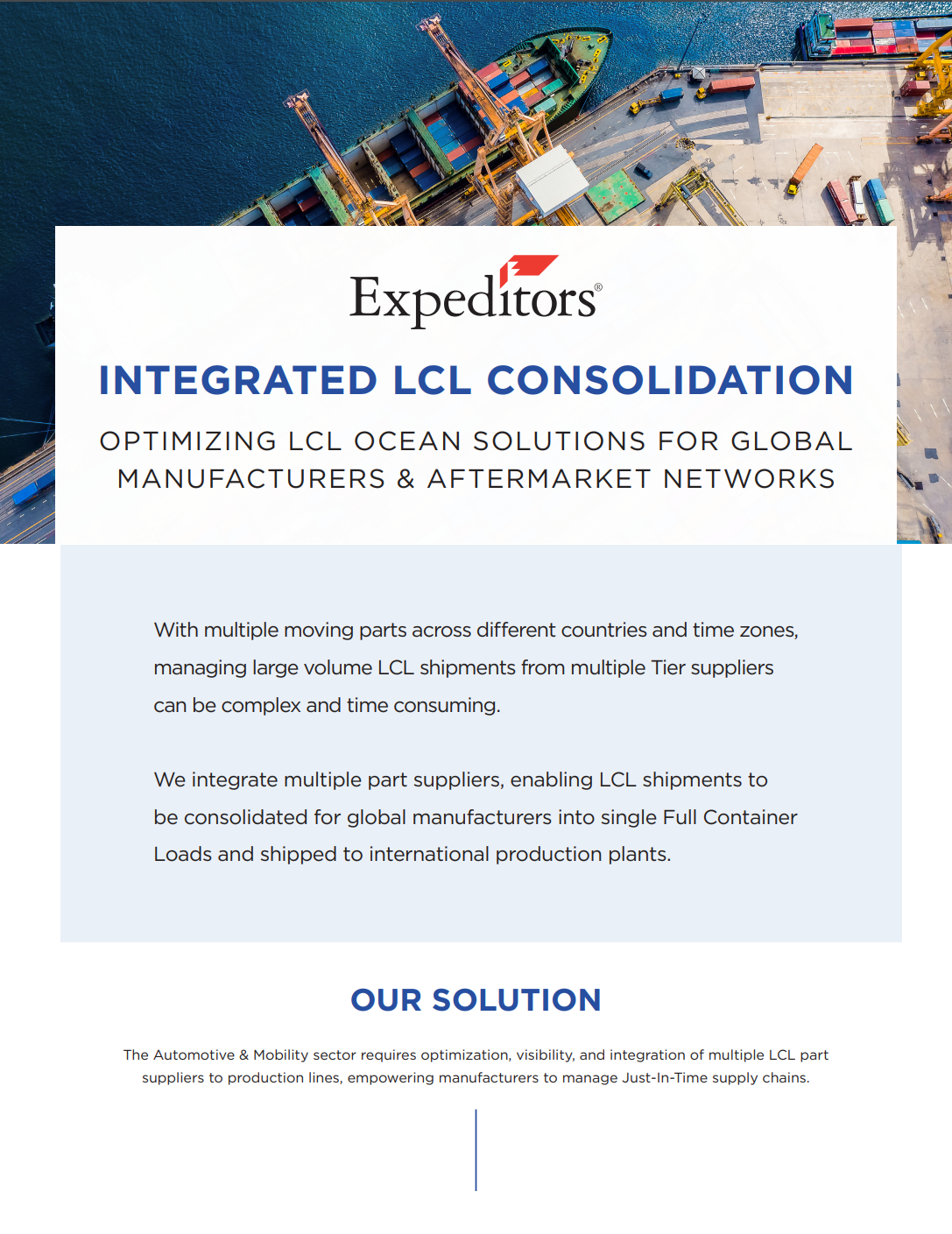Integrated origins consolidation is complex due to countless touchpoints, as well as too many service providers: forwarders, consolidators, steamship lines, de-consolidators... the list goes on. An intricate automotive supply chain often designs a bill of material across 250-450 Tier global suppliers, all manufacturing up to 30,000 different parts for a single vehicle.
Need a refresher on the core concepts? Be sure to check out our Understanding Integrated Logistics Consolidation video, because today we’re talking about next steps - we call it Integrated Logistics Consolidation.
We'll manage an integrated supply chain using real-time data and help you avoid pitfalls by providing:
Using integrated origins consolidation cargo strategies from different origins or destination points, multiple hubs, and inconsistent routings can be difficult and time-consuming to navigate. Enhancing visibility at each stage advances our position to better consolidate cargo with greater efficiency at our designated centers.
Our primary objective is to make sure your parts get to the right place at the right time. To avoid a major disruption in your supply chain, we offer 300+ weekly sailings on 40,000 individual lanes, including express routings for automotive flows. Consistency is integrated into our overall strategy by connecting suppliers, production plants, and dealers with easy-to-use systems.
We make it simple by minimizing cargo touchpoints and offering global visibility. Integration is made easier with a single provider who manages the consolidation of parts and the complexity of door-to-door transportation. With access to local expertise, you’ll have teams readily available for guidance and advice.
Our compliance programs have repeatedly asserted our leadership in preempting changes in market conditions and taking the right steps to help minimize the impact on our customers. We select carrier partners based on proven service, reliability, and compliance. This extends to robust process adherence and security controls for all consolidation centers, which meet our committed standards.
When an overseas production plant expects many different suppliers and parts to be managed at the same time, often to the same plant, it becomes more complex. With Integrated Logistics Consolidation, we coordinate the dispatch of parts from each supplier and consolidate all shipments into a single container. Our consolidation centers provide the ideal location, giving you full control over your shipments powered by our management tools and robust network capability. We’ll manage the inbound receipt and outbound shipping to meet production plant deadlines.
Our Center of Gravity analysis indicates a majority of suppliers are located inland, making our inland consolidation centers the ideal location. Expeditors’ routings consider your production demand and inventory levels to maintain an efficient supply chain. With an extensive range of road freight coverage and ocean service levels, our global network ensures critical changes can meet ocean departures.
Expeditors simplifies this process by managing your part suppliers using a single global system. The technology enables easy access to information from the time of booking, collection, receipt, and loading throughout the entire door-to-door transportation. Expeditors’ web-based portal is equipped with shipping data, documentation, and part-level information on request.
Yes, we provide a range of options using shipment, ASN, or part-level data. Expeditors provides real-time alerts and business milestones to customers, integrating data from suppliers to plants or receiving points at each stage of the supply chain. We provide a range of visibility tools to equip customers with seamless and automated information.
Yes, we provide a range of options using shipment, ASN, or part-level data. Our technology and tools enable the integration of data from all the suppliers. Information contained in the Advanced Shipping Notice (ASN) is the valuable link for accurate production planning from suppliers in multiple origin locations, allowing the effective consolidation of LCL cargo and plant visibility.
